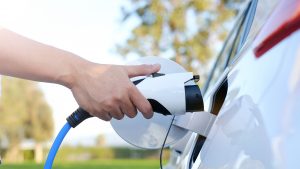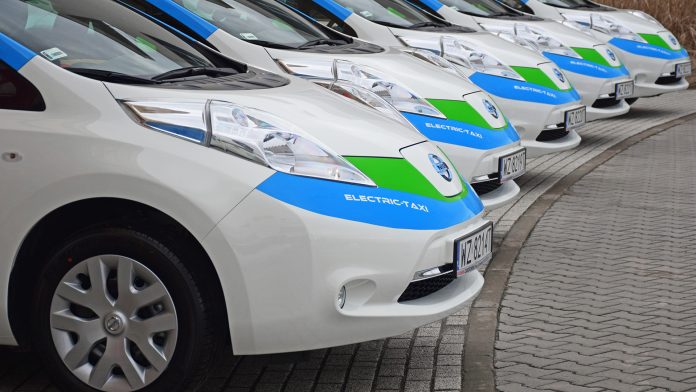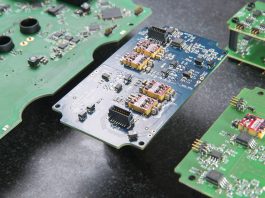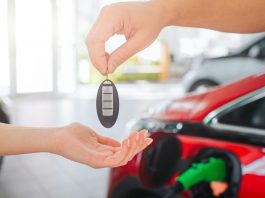A new study has found that the full electrification of Uber and Lyft vehicles would only provide modest benefits to society.
Ride-hailing services Uber and Lyft have pledged to fully electrify their fleets by 2030 in the US.
The shift would eliminate tailpipe pollution and relocate emissions to the power plants that provide the electricity to charge EV batteries.
Scientists have thought that this shift would result in a significant drop in overall greenhouse gas emissions.
However, a new study by researchers at the University of Michigan and Carnegie Mellon University has estimated that electrifying ride-hailing vehicles would only provide modest benefits to society. They estimated that on average, the benefits would be a 3% gain per trip when other costs on society are factored in.
The societal costs included increased noise, collision risk, and traffic congestion due to drivers travelling to and from fast-charging stations.
“Our simulation showed that electric vehicles drive greater distances without a passenger than do gasoline vehicles, since EVs have to travel to chargers more often than gasoline vehicles have to refuel,” said study senior author Parth Vaishnav, Assistant Professor at U-M’s School for Environment and Sustainability.
“Furthermore, fast chargers are not as ubiquitous as gas stations, which means EVs have to travel farther each time they refuel than gasoline vehicles.”
The study, ‘Life Cycle Air Pollution, Greenhouse Gas, and Traffic Externality Benefits and Costs of Electrifying Uber and Lyft,’ is published in Environmental Science & Technology.
The researchers modelled more than a million Uber and Lyft trips taken in Chicago
The researchers used a new high-resolution model called AgentX in their simulation. They combined this with real-world Uber and Lyft trip data collected in the Chicago area from 2019 to 2022.
Chicago is one of the largest ride-hailing markets in the US. Prior to the COVID-19 pandemic, the number of daily trips average around 300,000.

The team modelled more than a million Uber and Lyft trips taken at weekends, weekdays, and during different seasons. Trips before the pandemic started and during the period after the widespread rollout of vaccines were also included.
A set of standard economic tools was used to express the costs of electrifying ride-hailing services in terms of dollars.
Although the study results are specific to Chicago, the researchers believe that the findings are likely to apply more broadly.
The results show that electrifying ride-hailing reduces societal harm by 3% per trip
The study found that:
- Electrifying Chicago’s ride-hailing fleets would reduce lifetime greenhouse gas emissions by 40-45% due to the greater efficiency of electric vehicles.
- Health impacts from local air pollution would increase by around 6-11% per trip. This is due to higher concentrations of local pollutants, such as sulphur dioxide, from fossil fuel-burning power plants.
- Driving to and from charging stations would increase traffic-relation societal harms by 2-3% per trip.
These societal costs and benefits result in an overall societal harm reduction of around 3% per trip.
A 3% reduction in costs to society translates to around $1.5m per year in savings for Chicago.
In context, ride-hailing generates an estimate $4-5m in revenues per day in Chicago.
Only 20% of the total costs to society are a result of emissions
“It may seem counterintuitive that overall costs to society fall so little, even though greenhouse gas emissions are substantially reduced by the switch to EVs,” said study lead author Aniruddh Mohan, formerly a doctoral student under Vaishnav at Carnegie Mellon and now a postdoctoral fellow at Princeton University.
“But on a per-mile basis, greenhouse gas emissions are a very small part of the total costs imposed on society by these vehicles. The costs are dominated by traffic externalities—congestion, crash risk and noise—which are directly correlated with vehicle distance travelled. And vehicle distance travelled will increase with electrification.”

According to the study, around 80% of the total costs to society result from traffic-related factors. Only 20% are due to emissions.
The team’s assessment accounts for cradle-to-grave costs to society of building, operating, and disposing of EVs and gasoline-powered vehicles. The costs include battery manufacturing, vehicle construction, and gasoline refining.
How does battery size affect vehicle impacts?
The researchers looked at how the battery size of an EV affects vehicle impacts. Manufacturing smaller battery packs requires less energy and results in lighter vehicles. Both of these may lead to a reduction in greenhouse gas emissions.
However, they found that smaller battery packs did not help reduce societal costs.
Instead, a smaller battery pack meant that EV drivers visited chargers more often. According to the study, the additional miles cancelled emissions gains from using a smaller battery pack.
Electrifying ride-hailing fleets does not remove a large percentage of societal harm caused by cars
“Overall, our findings made it very clear that a large part of the damage that cars cause is unrelated to their air emissions and is therefore unlikely to be eliminated by electrification,” Vaishnav said.
“Electrification is a small win for society. A bigger win would be to dramatically reduce our dependence on cars. Policies that decrease vehicle distance travelled through investments in public transit and infrastructure for biking and walking, or that reduce crash risk by improved vehicle safety, are critical.”









